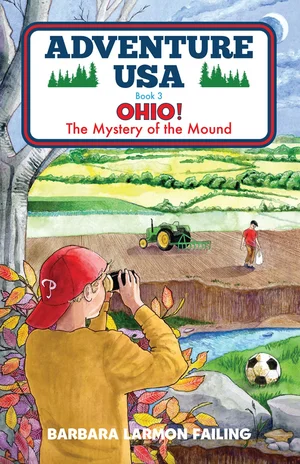
Peripatetic 11-year-old twins Josh and Lizzie started up north, racing dogs in rural Alaska. Next, they traveled to Massachusetts, where they helped find a missing museum artifact. Now, the siblings are in Ohio, embarking on an adventure involving Indigenous American mounds and artifacts. The twins, who are staying with family friends, befriend William, who once had a love of collecting rocks but became a soccer player after being bullied about his hobby by a group of classmates led by his former friend Brady. Josh and Lizzie learn about the nearby Noah Smith Mound. They head to a creek to look for treasure, and they find a red sweatshirt that suggests Brady might be disrespecting the land and searching for relics. Josh bonds with Wyan, a new neighbor and a descendant of the Wyandot tribe, who teaches his friends that the mounds are sacred spaces, not soccer fields. On a visit to a cultural center, Josh, Lizzie, and William meet Susan Chadwick, whose workshop on arrowheads rekindles William’s interest in rockhounding. Josh and Lizzie continue their treasure hunt, but they realize now that not all treasure is meant to be taken. At the same time, they realize the meaning of the “Snub the Club” signs they’ve been seeing—a grassroots movement is afoot to stop a group hoping to build a golf course nearby, reinforcing the book’s larger message about preservation. Throughout the fast-moving and often delightful story, themes of friendship, bullying, cultural respect, and rediscovery of personal identity are explored. The kids also face an ethical dilemma: Should they keep any artifacts they might find, or leave them in place for scientific research? Such topics might sound stodgily academic, but Failing weaves them into her tale in a way that teaches but doesn’t preach. In the end, the narrative urges readers to look a little closer at the past and at themselves. It also whets the appetite for more escapades featuring Josh and Lizzie.

